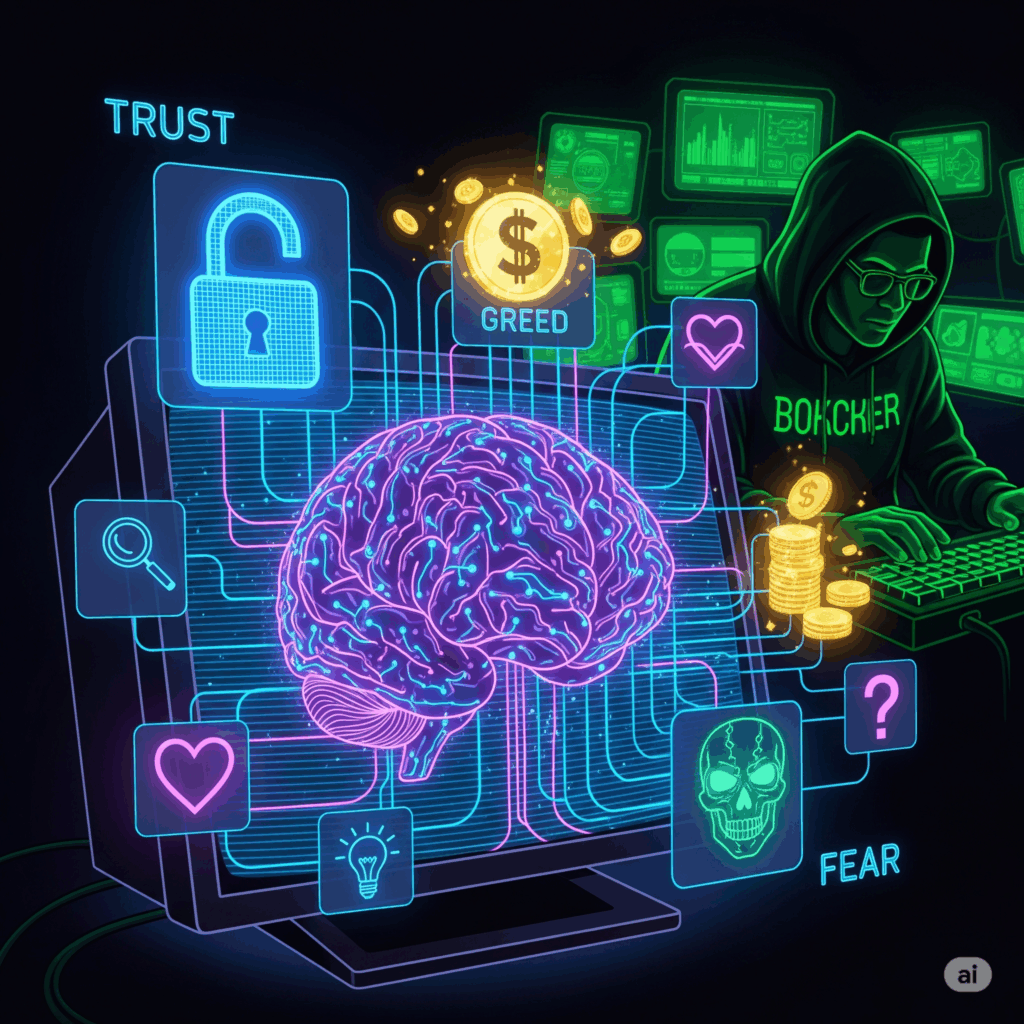
Are you looking for investment, pitch your idea with us!
When most people think of cybercrime, they imagine advanced hackers writing lines of code, breaking through firewalls, or launching powerful malware. While technology does play a role, the truth is far simpler—and more unsettling. The majority of successful cyberattacks don’t happen because of weak software but because of human weakness. Hackers have mastered the art of exploiting psychology. By manipulating trust, fear, greed, and even curiosity, they turn human behavior into their most powerful weapon.
Cybercrime is not only a battle of machines but also a battle of minds. Understanding this psychological dimension is the first step in protecting ourselves in an increasingly connected world.
The Human Factor in Cybercrime
It’s often said that humans are the weakest link in cybersecurity. Studies reveal that most breaches occur because of human error rather than technical flaws. Clicking on a phishing email, reusing a weak password, oversharing on social media, or failing to update software—all of these open the door to cybercriminals.
Hackers know this. Instead of wasting resources trying to crack high-level encryption, they target people because it is easier and often more effective. Why spend months breaking into a secure system when a cleverly written email can get someone to hand over their password voluntarily?
Social Engineering: The Art of Manipulation
One of the most common psychological tactics hackers use is social engineering—the manipulation of people to reveal confidential information or perform risky actions.
- Phishing: Hackers send emails or messages that appear to come from trusted sources, often creating a sense of urgency. “Your account will be suspended in 24 hours unless you verify your details!” is a classic example.
- Pretexting: A hacker pretends to be someone trustworthy, such as a coworker, bank officer, or IT support staff, to gain sensitive data.
- Baiting: Victims are lured with tempting offers, like free downloads or giveaways, which contain malware.
These tactics succeed not because technology fails but because human emotions take over logic.
Psychological Triggers Hackers Use
Hackers are not just computer experts; they are skilled students of human behavior. Some of the most common psychological triggers they exploit include:
- Fear & Urgency – Messages that warn of account suspension or financial loss push people to act quickly without thinking.
- Curiosity – Links with subjects like “Exclusive photos” or “Confidential report” often trick people into clicking.
- Greed – Fake lottery winnings, investment opportunities, or “get rich quick” schemes lure victims.
- Trust – Hackers impersonate friends, coworkers, or authority figures, exploiting our tendency to trust familiar names.
- Authority – Emails that seem to come from bosses, government agencies, or banks carry a weight of legitimacy.
By pressing the right psychological buttons, hackers gain control without ever touching a line of code.
Why We Fall for These Tricks
The reason these tactics work is rooted in human psychology. Our brains often use shortcuts, especially when under pressure. For example, we act quickly when we see a threat (like an account warning) or an opportunity (like a big discount). Hackers design their attacks to exploit these shortcuts.
Another factor is overconfidence. Many people believe they are too smart to be tricked, which ironically makes them more vulnerable. Combine that with the constant rush of digital life, where decisions are made in seconds, and it becomes clear why so many fall victim.
Lack of cybersecurity awareness also plays a huge role. Many users simply don’t know what modern scams look like, which leaves them defenseless.
Defending Against Psychological Exploits
The good news is that once we understand the psychology behind cybercrime, we can fight back. Some powerful defenses include:
- Pause Before Acting: Don’t respond immediately to urgent messages. Take a moment to verify.
- Verify Sources: If an email seems suspicious, contact the sender through official channels instead of clicking links.
- Use Strong Security Practices: Create unique passwords, enable two-factor authentication, and keep software updated.
- Educate Yourself and Others: Regular training and awareness can drastically reduce human error.
- Practice Digital Skepticism: Treat unexpected messages, links, and attachments with caution.
By shifting from reactive behavior to mindful action, we strengthen the weakest link in cybersecurity—ourselves.
Conclusion
Cybercrime is as much about psychology as it is about technology. Hackers don’t just attack computers; they attack human emotions, behaviors, and instincts. By exploiting fear, trust, greed, and curiosity, they turn ordinary people into easy targets.
The best defense lies not only in strong software but also in stronger awareness. Once we recognize the psychological tricks hackers use, we take away their biggest advantage. Cybersecurity, then, becomes not just a technological shield but a mindset—one where vigilance, awareness, and focus protect us in the invisible battlefield of the digital world.






















